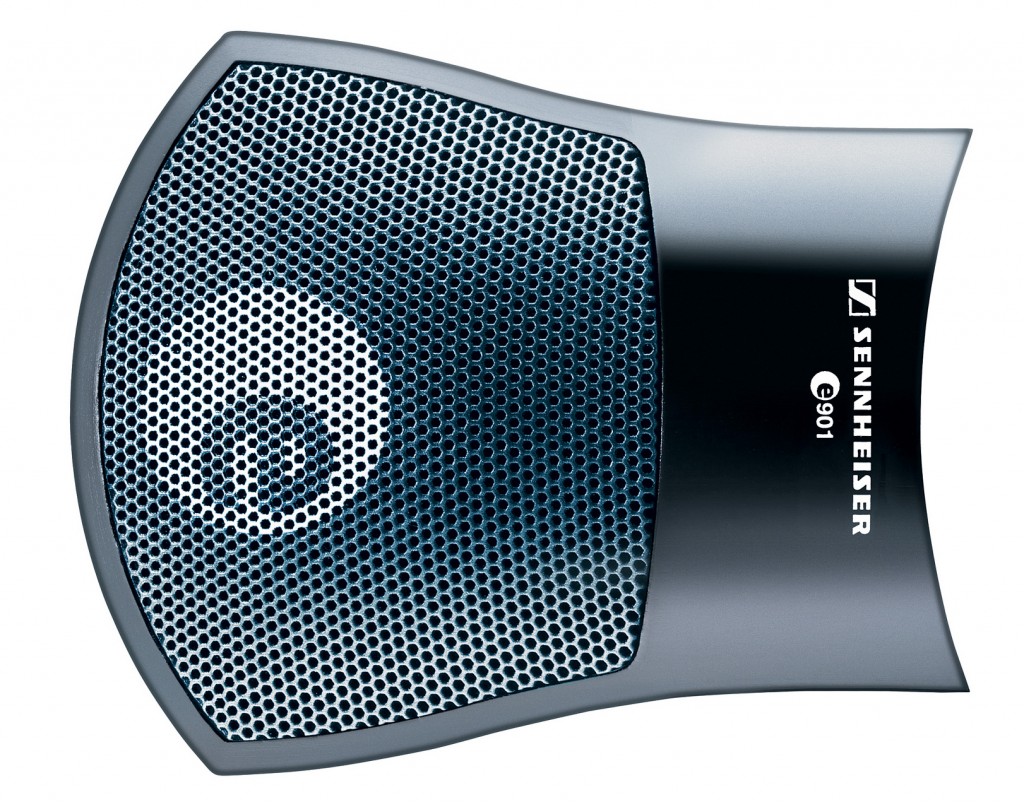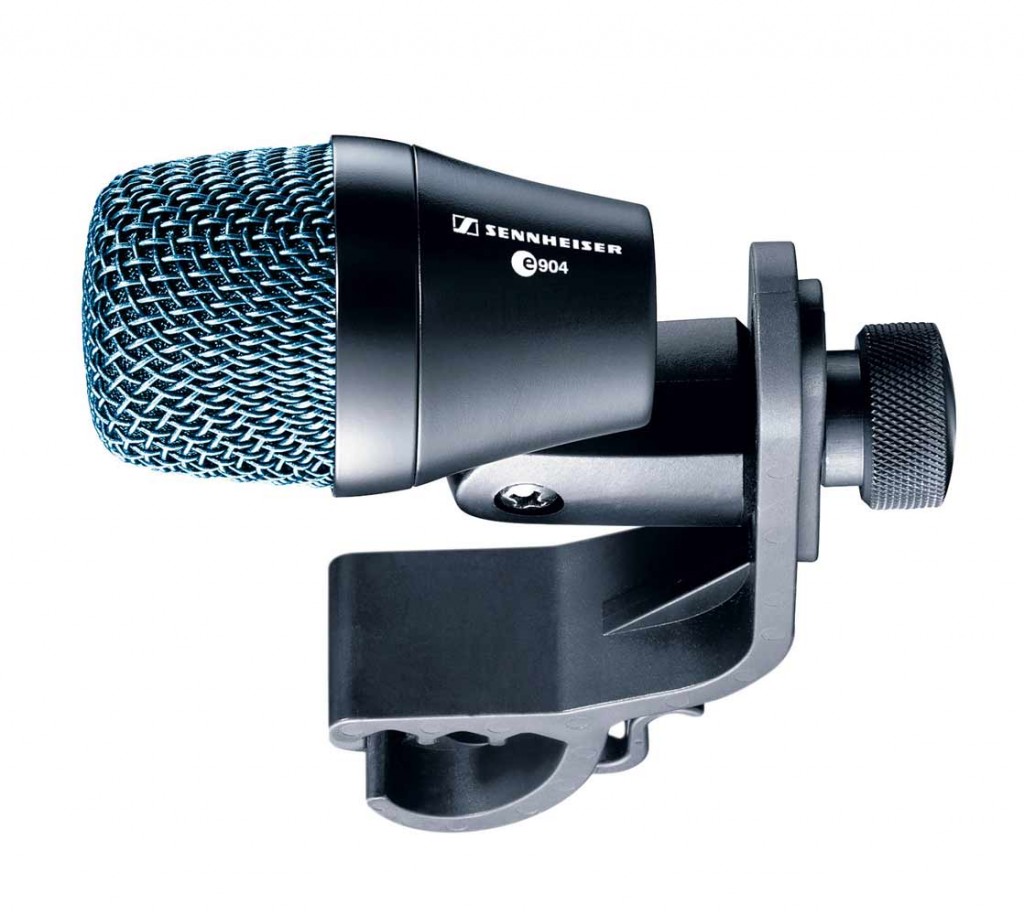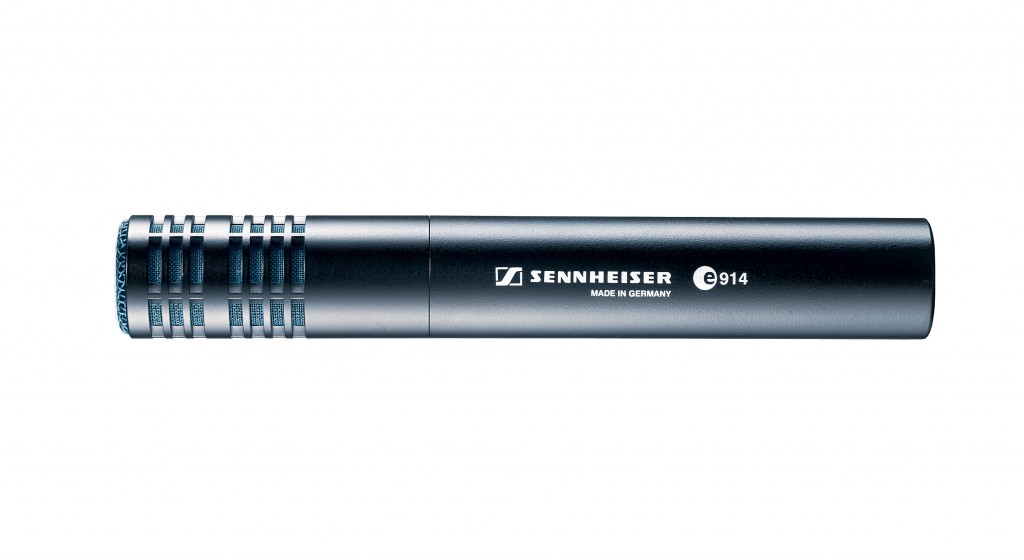Sennheiser Evolution e900 Series Microphones



January 2013
Electronic Review
Sennheiser
Evolution 900 Series Microphones
by Butch Jones
I’ve been recording drums for a very long time, and I’ve always had at least one Sennheiser microphone as part of my setup. Usually it’s an MD 421 hanging tough on the rack tom. For this review, though, we’ll be pulling down the 421 and giving four drum-specific models from the e900 series a shot at capturing the kit. These mics have excellent transient response and highly uniform polar patterns, and each is equipped with gold-plated XLR pins to reduce oxidation. All e900 series mics come with a carrying pouch and are backed by a ten-year warranty.
e901 Bass Drum Mic
The e901 ($239) is a high-quality pre-polarized condenser microphone with a half-cardioid pickup pattern and an internal preamplifier. The extremely thin, high-strength diaphragm delivers a very low bass response and fast transient signals. Incidental rear noise is effectively rejected, leading to a tight kick sound with plenty of attack and a clean bottom end. The e901 weighs 1.2 pounds, which helps to keep it in place when laid in the bottom of the drum. I achieved the best results by sitting the mic on top of a tightly folded towel and positioning it as far away from the batter head as possible, while being careful not to let the cable rub against the head.
I also tried placing the e901 on the floor, 3″ in front of the drum. I draped two moving blankets over the drum and placed a barstool in front, which solved any leakage problems. After I heard the result of this placement, I knew I had found my new favorite microphone for jazz bass drums or for any drum without a port in the front head. The outside position lacked some attack, but I’m sure that blending this sound with that from a second mic placed inside the drum would be awesome. Advertisement
e905 Snare Mic
The e905 ($200) is a high-quality dynamic microphone with cardioid pickup pattern, a fast attack, and a shock-mounted capsule. This model can handle high SPLs (sound pressure levels) and has an excellent transient response, making it ideal for snare drums as well as for percussion instruments and toms. Due to its compact design, the e905 is easy to position in tight areas, which offers the opportunity to place it higher above the snare. I often find that if I can get an extra inch or two away from the skin, I’ll have a better chance of capturing a fuller sound. I loved the tone I got with just a tiny roll-off (-3dB) at 500 Hz. This microphone was also great at minimizing hi-hat leakage.
e904 Tom Mic
The e904 ($200) is a high-quality dynamic microphone with a cardioid pickup pattern, a fast attack, and a hum-compensating coil. Due to its compact design, this model is ideal for use on toms. The supplied MZH 604 microphone clamp lets you attach the mic to the rim of the drum, allowing for placement in really tight places, such as between cymbals and neighboring toms. The clamp allows for slight angle changes, which aids in the final choice for placement. The tight pickup pattern allowed me to get a round rack tom sound while minimizing the bleed coming into the mic from other drums and cymbals. I was pleasantly surprised by how great this mic sounded on the floor tom. It would also be great to clip the e904 to the bottom of the snare.
e914 Cymbal/Hi-Hat Mic
The e914 ($400) is a cardioid pre-polarized condenser microphone with a wide frequency response, high SPLs, a fast transient response, and a compact design. It has a frequency response of 20 Hz to 20 kHz, and it comes with a sensitivity switch (0, -10dB, -20dB) and a three-position bass roll-off/cutoff switch, which makes it ideal for cymbals and hi-hats. Advertisement
I used a pair of e914s in an X-Y position over the kit and was pleased by the stereo imaging. When I set the bass roll-off to the middle position (130 Hz 6dB/Oct), I didn’t need to add my normal 300 Hz EQ dip to get rid of the veil that I tend to hear on all drumsets. The cymbals sounded clean, bright, and almost transparent. Had I not put up the microphones myself, I could’ve been fooled into thinking they were ribbon mics.
We started our testing using thin, darker-sounding cymbals. Then we switched to heavier ones, and the result was a brighter sound, but without the edginess you sometimes get from condenser mics. A minor issue I have with the e914 is that the switches for the sensitivity and roll-off controls are small and not easy to set.
The e914 also sounded great on hi-hats with the bass roll-off switch in the middle position (130 Hz 6dB/Oct). My placement was right at the edge of the cymbal, 1″ above and bent in at a 45-degree angle. I like this position because I can capture a bit of the air coming from the cymbals when the drummer closes them. Advertisement
In Closing
After setting up the e900 series on the kit and recording about sixteen bars of a basic groove, I was amazed by the playback. We expect that many home-studio drummers will be adding these models to their inventories very soon. Two versions of our test recording—one without any processing and one with some basic EQ, compression, and reverb—are posted at moderndrummer.com, so you can hear the mics in action. We think you’ll be impressed.
Here’s an audio sample of the review mics without any processing.
Here’s an audio sample of the review mics with basic EQ, compression, and reverb.
For the complete review of the Sennheiser e900 Series mics, check out the January 2013 issue of Modern Drummer.


